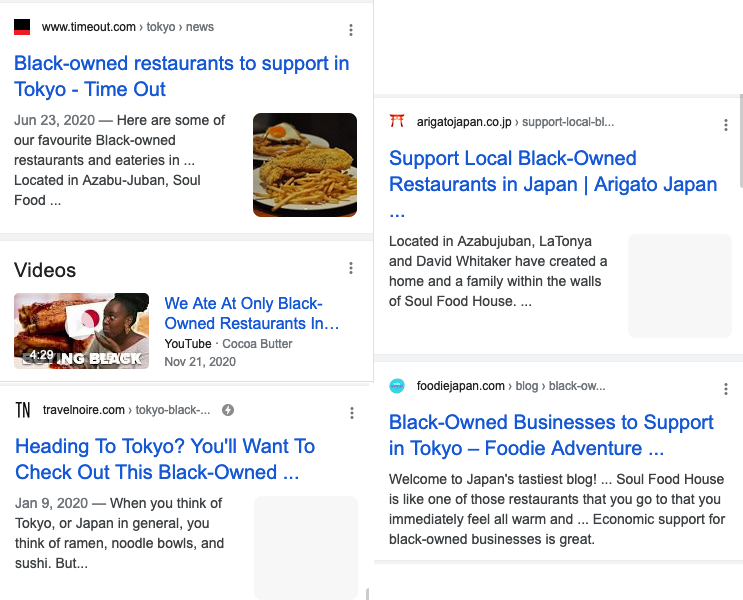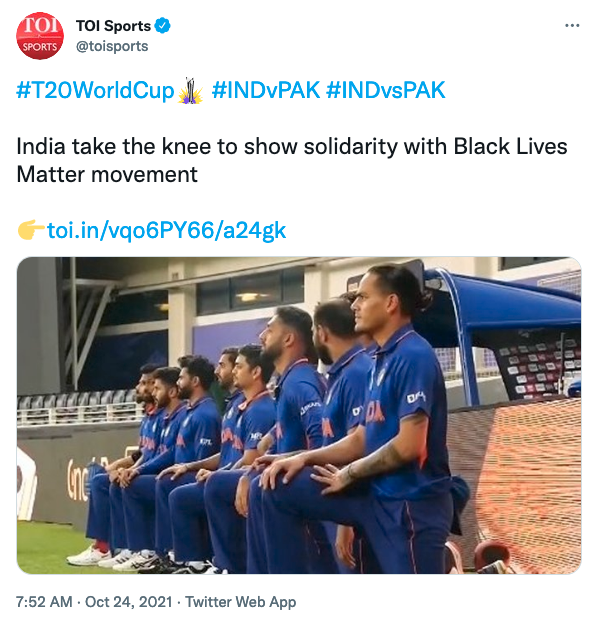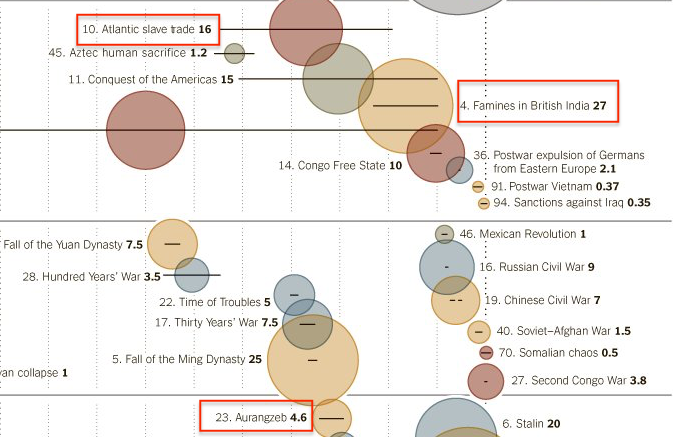Black Lives Matter is American Imperialism
Importing Black Lives Matter as a meme into the Indian memeplex denies access to our own cultural memory of our shared history with Africa. Instead we accept the universalization of American culture.

Importing Black Lives Matter as a meme into the Indian memeplex denies access to our own cultural memory of our shared history with Africa. Instead we accept the universalization of American culture.

I came across this Twitter post where grocery stores in the US were labeling products as “Black owned”.

This was after the incident of police brutality which led to the death of George Floyd, an unarmed Black man accused of making a purchase using counterfeit currency. Around that time, I also saw many ads popping up encouraging people to shop in and eat at Black owned restaurants. This in itself is a good way to douse the racially charged atmosphere in the US by encouraging White Americans to show solidarity with the Black Americans.
What irked me was that the ad was asking people to eat at Black owned restaurants, not in the US but in Japan! Out of curiosity, I searched the internet and actually found several pages promoting it. Japan has no connection to oppression of African-Americans. Even Meiji era Japan did not have African colonies. So, the American cultural zeitgeist was universalized and forced on to Japan.

While one could accuse me of reading too much into it, it concerns me that this pattern repeats itself and also strikes closer to home in India, a country which has already suffered centuries of European Colonialism. Last year, Hardik Pandya, an Indian cricketer, during an Indian Premier League game, took a knee for Black Lives Matter. What prompted me to write this post is that the same was repeated before the India-Pakistan cricket match of the T20 World Cup.

Neither the IPL nor the T20 World Cup has USA participating as a team. It simply does not make sense that this was done. What makes this even insensitive is that this comes just a week after Bangladesh has seen deadly attacks on Hindus, killing and injuring several, with Hindu houses and Temples burnt down. And this is also shortly after targeted killings of Hindus and Sikhs, who are religious minorities, in Kashmir. But there was no solidarity with the Bangladeshi Hindus, no taking a knee for those victims of targeted killing in Kashmir by Pakistan sponsored terrorists.
How come a cause from a far away country, which does not even play cricket, is worth the solidarity when those which happen at home doesn’t? What we see here is a typical form of Cultural Imperialism.
“The term cultural imperialism refers most broadly to the exercise of domination in cultural relationships in which the values, practices, and meanings of a powerful foreign culture are imposed upon one or more native cultures. In this broad sense cultural imperialism could be used to describe examples of the enforced adoption of the cultural habits and customs of actual imperial occupying powers from antiquity down to nineteenth and twentieth century European colonialism. In practice, however, the term is nearly always applied to relations between sovereign nation-states from the mid twentieth century onwards.”[1] (Emphasis mine)
While I sympathize with African-Americans and condemn anti-Black racism (or racism of any kind), one has to understand that the BLM movement is very endemic to the US. It arose out of the historical context of the Eurosphere and US in particular. Other countries may not have had the same experience. Hence imposing the American cultural zeitgeist on India, or elsewhere, needs to be called out.
Let us take the case of the relationship of Indians with Africans. India simply did not have the same relationship with them which the Eurosphere had. Indian Ocean trade with Africa was flourishing even before Europeans dominated the Indian Ocean. Indians extensively traded with Aksumite Empire of Ethiopia and they were called “Krishna Yavanas”.
Many of the African diaspora settled down in India. Siddis, a descendant of African Bantu tribes are one such community who have assimilated into Indian culture. Shantaram Siddi was made an MLC in Karnataka by the BJP, the so-called “right wing” party. How many Indians would know of all these?

Importing Black Lives Matter as a meme into the Indian memeplex denies access to our own cultural memory of our shared history with Africa. Instead we accept the universalization of American culture, values, and more worryingly accept their social problem as ours.
Sometimes, this descends into absurdity where the Anglicised, Americanized elite in India are so disconnected from where they live that social issues of a faraway land takes precedence over ones in their neighborhood. This results in apathy from them towards their gentile tilak spotting neighbor, and at worst even a phobia.

Another dangerous outcome of this is the universalization of victimhood. Post 9/11 a lot of push was made to universalize Muslim vicitmhood though the cries of “Islamophobia”. Such universalization lead to stifling criticism of the designated universal victim group when they themselves are perpetrators of violence elsewhere (of course within the context of where they perpetuated it).
Black victimhood is now being universalized and will lead to glossing over of violence from Blacks against other communities in the fear of being labeled a racist. A stark example of this was the July 2021 riots in South Africa where Indians, who are minorities, were specifically targeted, Black South African leaders were seen giving incendiary speeches against Indians. Very little of this was spoken in Western media. I would only surmise that the groups involved made it inconvenient for them to talk about.
And who could forget what Idi Amin of Uganda did when he purged his country off Indians and forced them to leave.

The Western Cultural Imperialism and Western normative universalism gives rise to sinister narratives which exacerbates existing faultlines in India and creates new ones. Rajiv Malthra had detailed in his book ‘Breaking India: Western Interventions in Dravidian and Dalit Faultlines’ about the Afro-Dalit project which is a Christian Evangelical project aiming to draw parallels between African Americans and the scheduled caste people in India and thus weaponizing their identities against the Indian state. Similarly, the group Dalit Panthers was modeled after the Black Panthers in the US.
A corollary of this narrative is that Hindus are the “Whites of South Asia”. This is popular among those who self-identify as “South Asian” Americans. Hindus having suffered two waves of colonization, first via Islamic Turks and then via Christian British are being turned into aggressors, after having been enslaved, genocided, and having their sacred structures and knowledge systems destroyed.

Such revisionism foments hate against Hindu-Indian Americans who are among the most educated and successful groups in the US, and have the lowest crime rate.
As we have seen, the universalization and application of the Black Lives Matter movement outside of the context of the US is a form of Cultural Imperialism. For societies like India which have still not recovered from British colonialism where much of the indigenous ontology and epistemology has been stamped out and an European one imposed, imposition of American cultural zeitgeist would be much more debilitating. It would worsen our social fault lines and mentally prepare us to accept the American Civilizing Mission as the solution.
Indians should thus learn to see such “coloniality”. Once you see it, you cannot unsee it. Such imposition of Americanism should receive a push back.
___
[1] Tomlinson, J. (2012, February 29). Cultural imperialism. Wiley Online Library. Retrieved October 24, 2021, from https://onlinelibrary.wiley.com/doi/abs/10.1002/9780470670590.wbeog129.
[2] The New York Times. (2011, November 5). Population Control, marauder style. The New York Times. Retrieved October 24, 2021, from https://www.nytimes.com/2011/11/06/opinion/sunday/population-control-marauder-style.html.
DISCLAIMER: The author is solely responsible for the views expressed in this article. The author carries the responsibility for citing and/or licensing of images utilized within the text.
